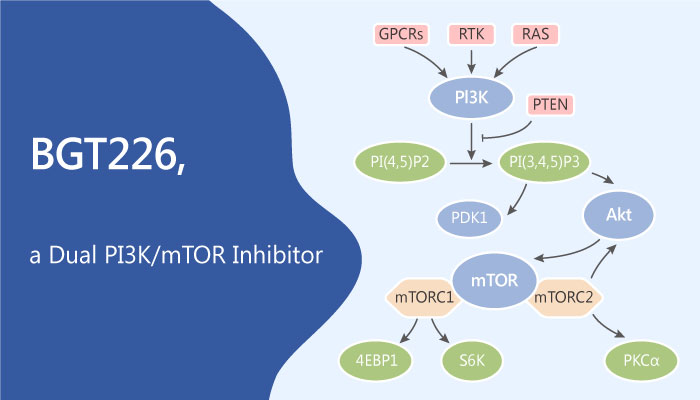The phosphoinositide 3-kinase (PI3K) pathway has key roles in regulating physiologic functions, including cellular proliferation, growth, metabolism, and survival. The PI3K pathway frequently activats in cancer cells, via several mechanisms, including mutation of PI3K signaling components and downstream effectors. One example is the aberrant expression of phosphoinositide 3-kinase (PI3K)/AKT/mTOR. It plays a critical role in cancer cell growth and proliferation.
Head and neck squamous cell carcinomas (HNSCC) are a group of cancers. Recent studies have focused on the disorder of this pathway in HNSCC. AKT, one of the key proteins, and other cascade proteins are also emphasized in HNSCC, including PTEN and mTOR. Therefore, Specific targeting agents on the signals leading to tumorigenesis are essential for the disease.

BGT226, an imidazoquinoline derivative, is an orally bioavailable potent pan-class I PI3K and mammalian target of rapamycin (mTOR) catalytic inhibitor. Furthermore, BGT226 has IC50 values of 4 nM, 63 nM and 38 nM for PI3Kα, PI3Kβ and PI3Kγ, respectively.
In vitro, BGT226 shows significant growth inhibition or signal blockage profiles compared with LY294002 and Rapamycin. In addition, BGT226 inhibits FaDu and OECM1 cells growth. The IC50 values are 23.1±7.4 and 12.5±5.1 nM, respectively. Meanwhile, BGT226 decreases protein levels of phosphorylated mTOR and Akt, a downstream target of PI3K signaling.
In vivo, BGT226 causes 34.7% and 76.1% reduction of the tumor growth on day 21 in xenografted mouse model.
In summary, BGT226 as a PI3K/AKT/mTOR inhibitor, is effective in targeting head and neck cancer in vitro and in vivo. Furthermore, it provides a rationale for further clinical study in the future.
Reference: